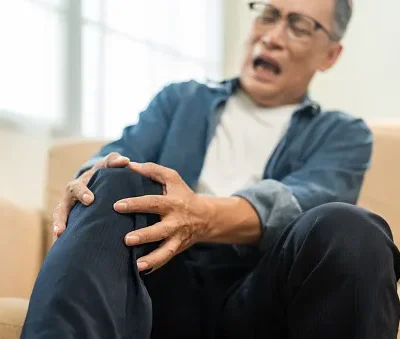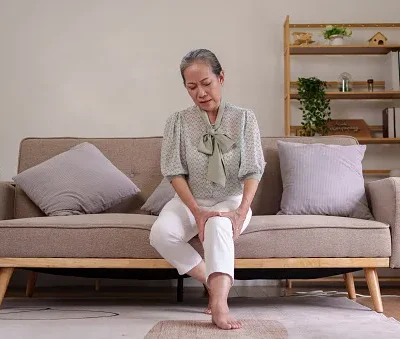
Over time you can try to increase the number of repetitions you do. As this gets easier, and if you feel able to, add 1 or 2 repetitions to your movements every few days. You may wish to do all the exercises together or start with one or two and add more as you get more comfortable. Check out these best-sellers and special offers on books and newsletters from Mayo Clinic Press. If you have pain, OTC medications may include nonsteroidal anti-inflammatory drugs (NSAIDs).
Up to age 55, about the same percentage of men and women have osteoarthritis, with men being slightly more vulnerable. After that age, women are more vulnerable and it affects them in different ways. In women, the disease seems to affect the hands, knees, ankles and feet, usually involving multiple joints. In men, the hips, wrists and spine are more likely to be affected. When medications and other treatment no longer ease pain, joint surgery is often an option. Hip and knee replacements are the most common surgical procedures for OA and can relieve pain and help restore function.
If you are a senior dealing with severe osteoarthritis in both knees, it can be challenging to manage your condition and maintain a good quality of life. However, there are several tips that can help you cope with the pain and limitations caused by this degenerative joint disease.
Osteoarthritis causes the cartilage in a joint to become stiff and lose its elasticity, making it more susceptible to damage. Over time, the cartilage may wear away in some areas, greatly decreasing its ability to act as a shock absorber. As the cartilage deteriorates, tendons and ligaments stretch, causing pain.
Stay Active
People can also consult a doctor, a mental health professional, or a support group if severe OA affects their mental health and overall well-being. The Arthritis Foundation can connect people with arthritis and their caregivers with peer-led support groups. This may include repairing joint damage or replacing a joint. This can cause increased severity of symptoms, including persistent pain and stiffness that may make it difficult to carry out everyday activities. This article looks at the stages of OA progression, symptoms of severe OA, steps that may help prevent OA from worsening, and treatment options.
People with osteoarthritis may experience bone lesions or overgrowths, also known as spurs. There is no evidence that glucosamine can help rebuild cartilage. SAMe is another supplement with potential benefits for osteoarthritis. In fact, some research has shown it may be as effective an anti-inflammatory drugs.
With origins in Chinese martial arts, this low-impact, slow-motion exercise also emphasizes breathing and mental focus. The Arthritis Foundation developed a standardized form of tai chi designed specifically for people with arthritis. Based on Sun-style tai chi, one of the discipline’s five major recognized styles, it includes agile steps and a high stance (meaning the legs bend only slightly). One of the most common reasons for knee replacement surgery is severe pain from joint damage caused by wear-and-tear arthritis, also called osteoarthritis. An artificial knee joint has metal caps for the thighbone and shinbone, and high-density plastic to replace damaged cartilage. Each of these artificial parts is called a prosthesis.
In people over age 50, more women than men have osteoarthritis. Osteoarthritis is a degenerative disease that worsens over time, often resulting in chronic pain. Joint pain and stiffness can become severe enough to make daily tasks difficult. Osteoarthritis is the most common form of arthritis, affecting millions of people worldwide. It occurs when the protective cartilage that cushions the ends of the bones wears down over time. If your knee pain worsens while following this advice, it’s a good idea to talk to a healthcare professional about your symptoms.
While it may seem counterintuitive to stay active when dealing with knee pain, gentle exercise can actually help improve your mobility and reduce stiffness. Low-impact activities like swimming, cycling, or tai chi can be beneficial for strengthening the muscles around your knees and improving flexibility.
Manage Your Weight
Carrying excess weight can put added stress on your knees, exacerbating the pain caused by osteoarthritis. Maintaining a healthy weight through a balanced diet and regular exercise can help reduce the strain on your joints and improve your overall well-being.
Use Assistive Devices
Assistive devices like canes, walkers, or braces can provide support and stability for your knees, making it easier to move around with less pain. Talk to your healthcare provider about which devices may be most helpful for your specific needs.
Consider Physical Therapy
Physical therapy can be an effective way to improve your strength, flexibility, and range of motion. A trained therapist can work with you to develop a personalized exercise plan that targets your specific needs and helps you manage your osteoarthritis symptoms.
Explore Pain Management Options
If over-the-counter medications are not providing enough relief, talk to your doctor about other pain management options. They may recommend prescription medications, injections, or alternative therapies like acupuncture or massage to help alleviate your knee pain.
By following these tips and working closely with your healthcare team, you can better manage your severe osteoarthritis in both knees and continue to lead an active and fulfilling life.

 Ageless Knees
Ageless Knees 


